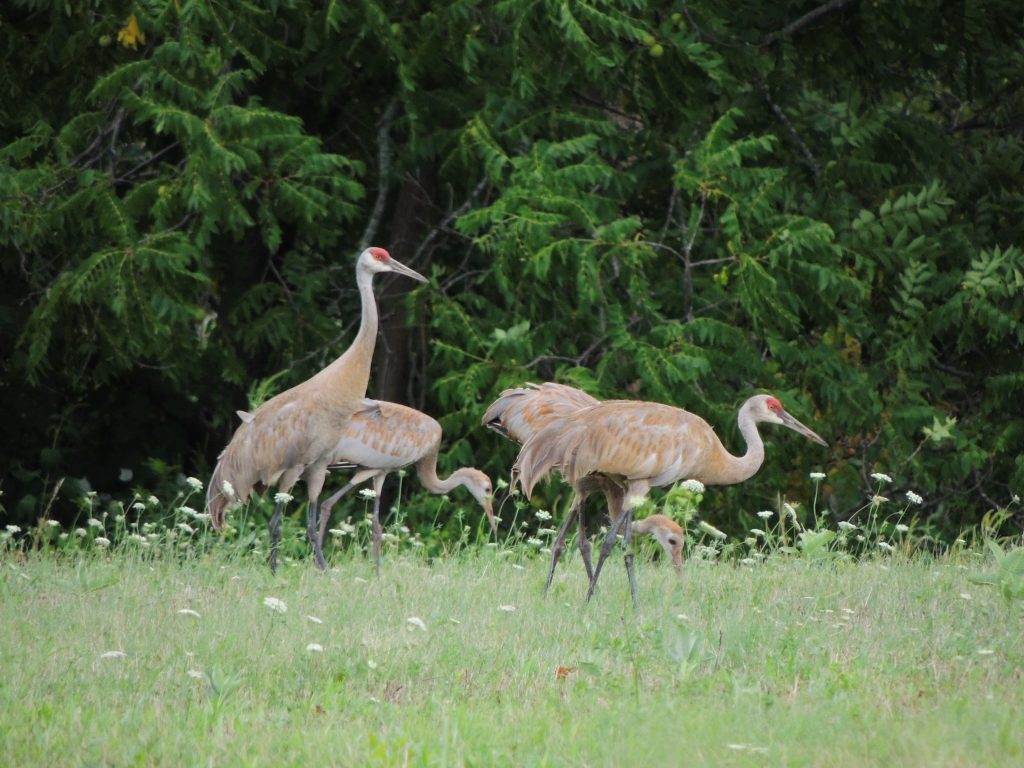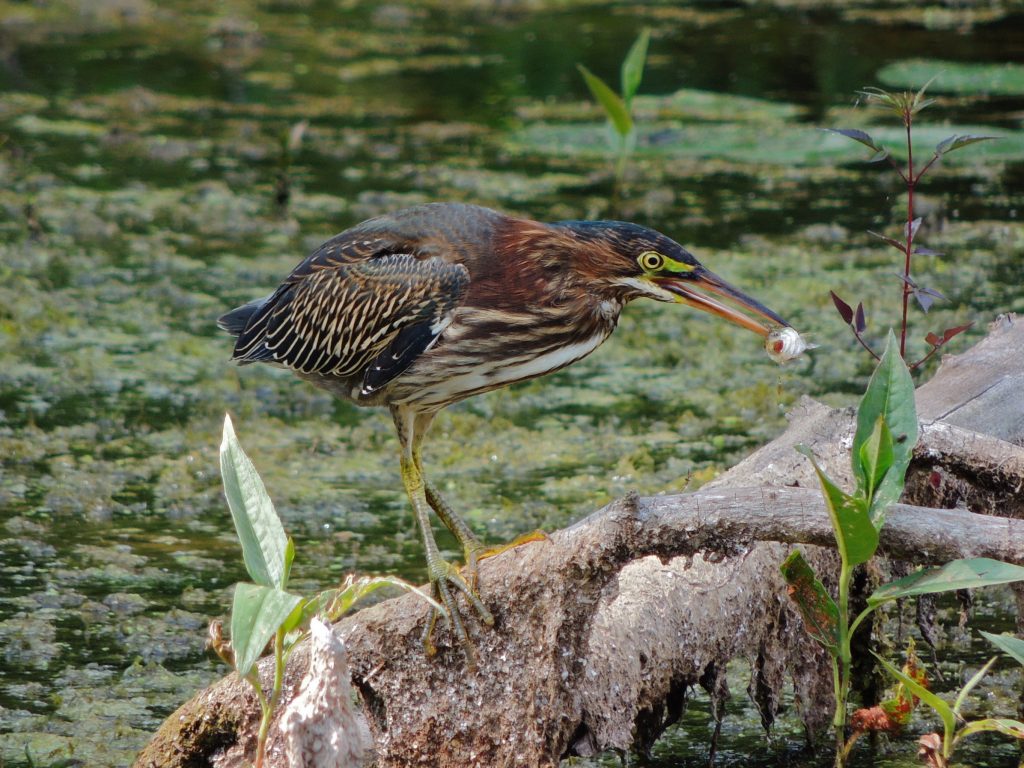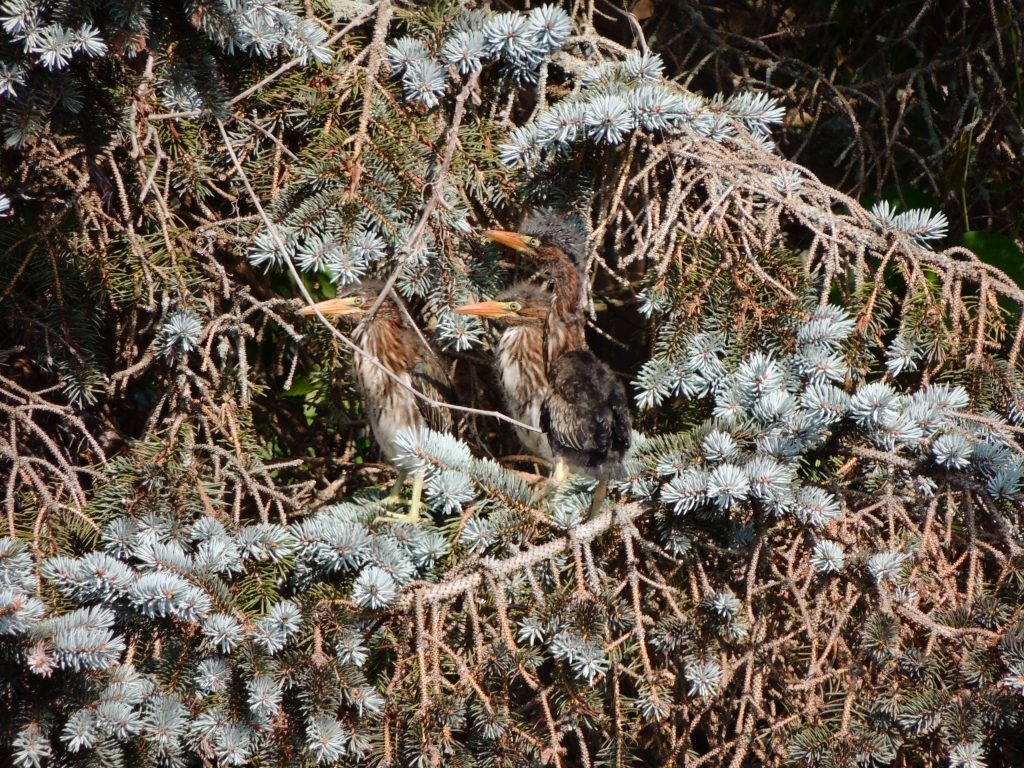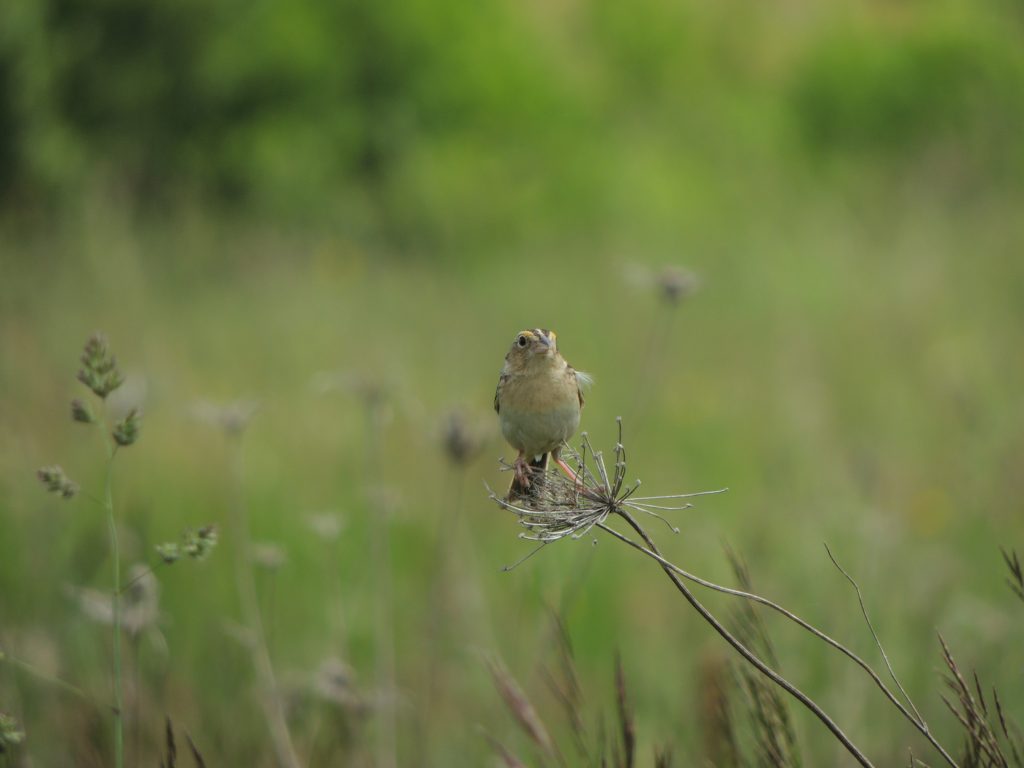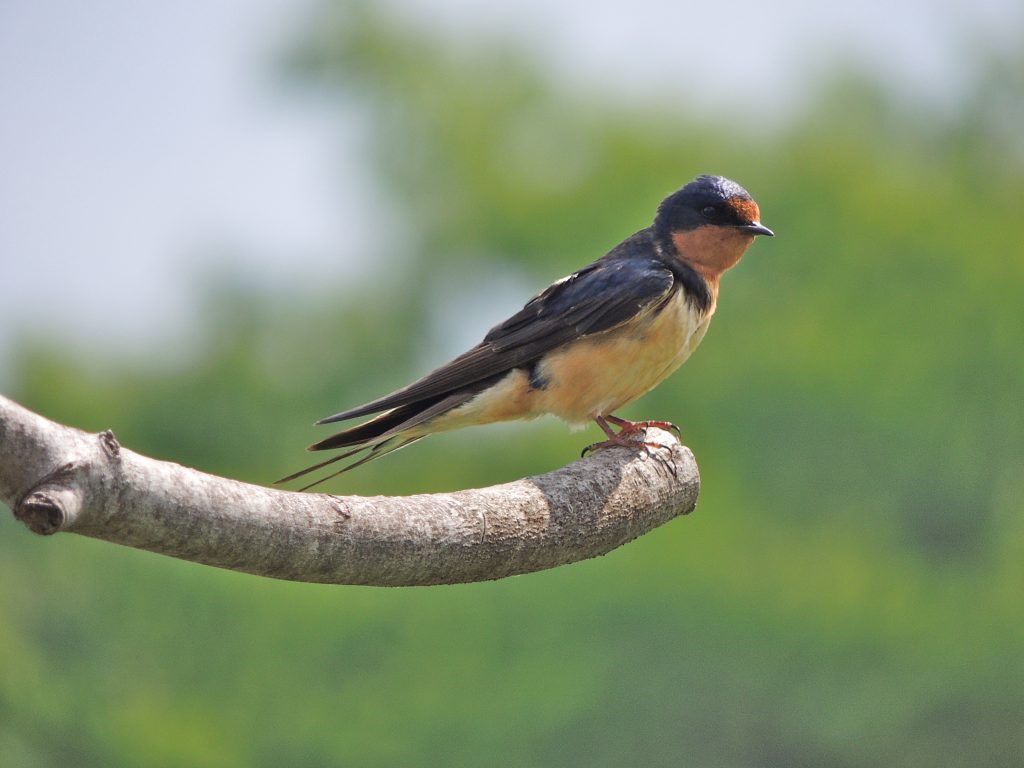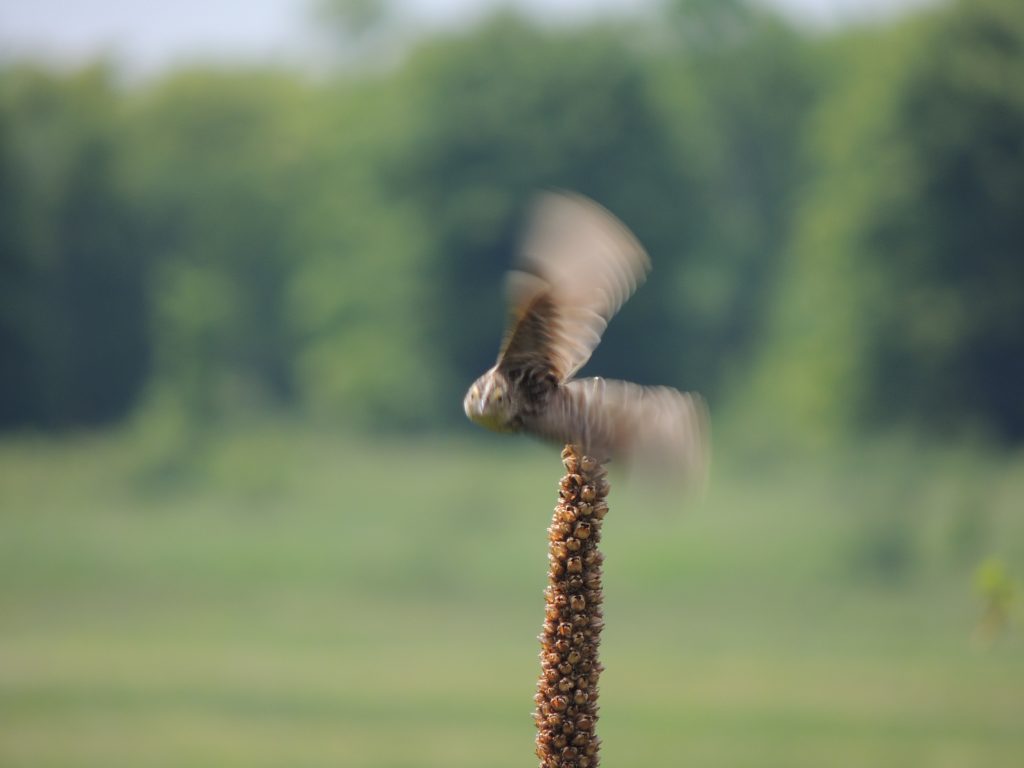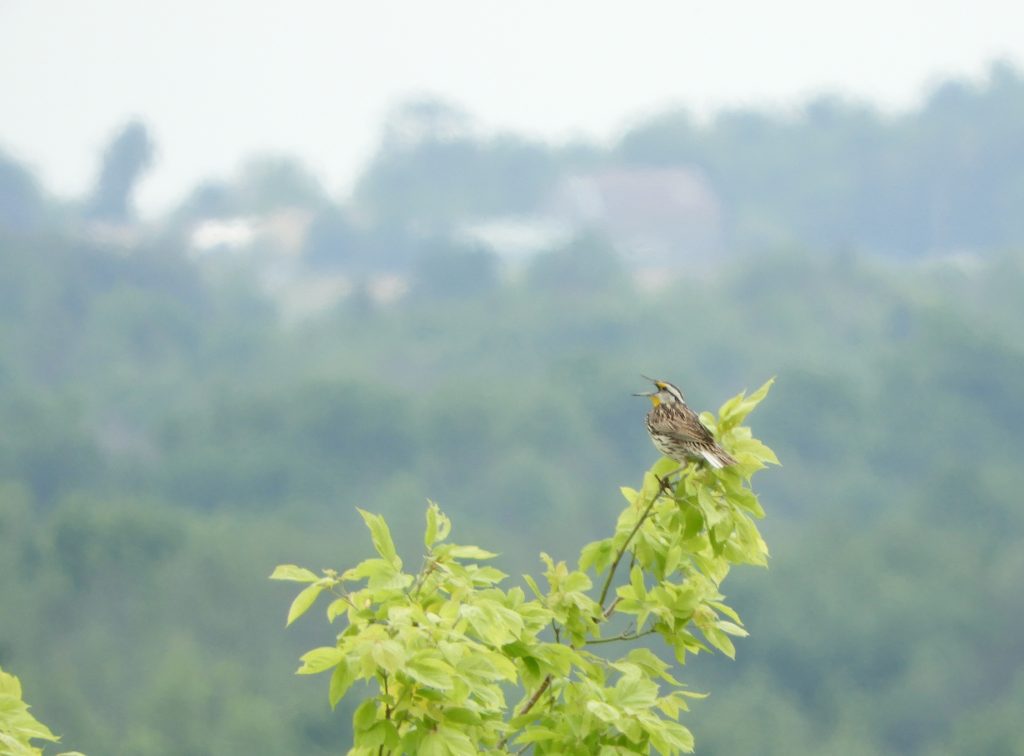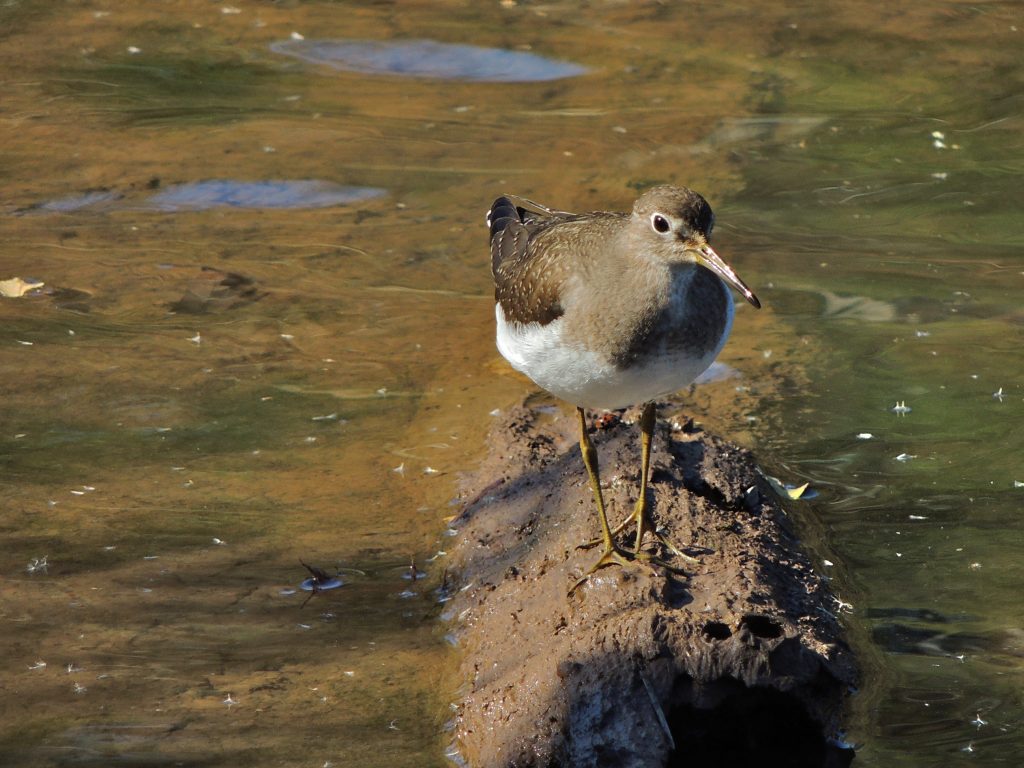
Blue Lakes, Brant County, July 24, 2020. Despite my many assertions that birding in July is time ill-spent, I do get restless and always undertake a few longer-range trips in pursuit of almost-certain sightings, pilgrimages you might call them. Today I went looking for Sandhill Cranes in a wide boggy valley where I felt sure they’d be; and they were.
My journey there took me past rolling, just-harvested wheat fields, where the passage of big-swath farm equipment was preserved like wide stripes on a tea towel. I always view those first harvests of high summer with a twinge of regret, as if they mark the end of summer for fields having done all that was asked of them.
I stopped at small roadside pond just in case. The water level was low and the pond scummed over with weed and algae, the sort of surface you hope you never have to come face to face with. A female Hooded Merganser paid me little attention, making me think that perhaps either she had not produced a brood this year or, her nest and young had been lost to predators. In the normal course of things, she should have been the nervous mother-ship to a fleet of hyper-active young. A few yards from her I noticed a quiet Solitary Sandpiper, it was just standing on that mat of algae bobbing its head, as they characteristically do. Rather a pretty shorebird and well named, solitary, for we rarely see more than one and they prefer just the sort of small mushy pond as this. This is the bird, fitting in perfectly.
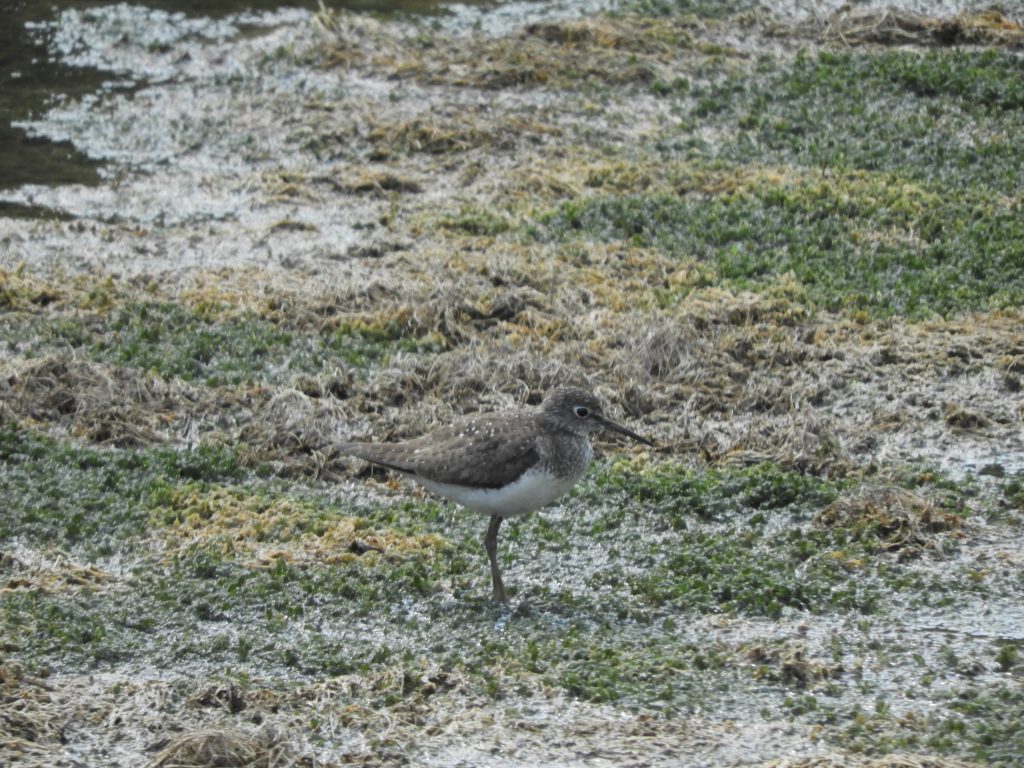
I was pleased to see it because I hadn’t as much as glimpsed one during the spring migration making this my first of the year, and My Bird of the Day. This is not unusually early for a Solitary Sandpiper to be on its way south (as it assuredly was); perhaps a failed breeder or perhaps a one-year old who hasn’t quite got the hang of things.
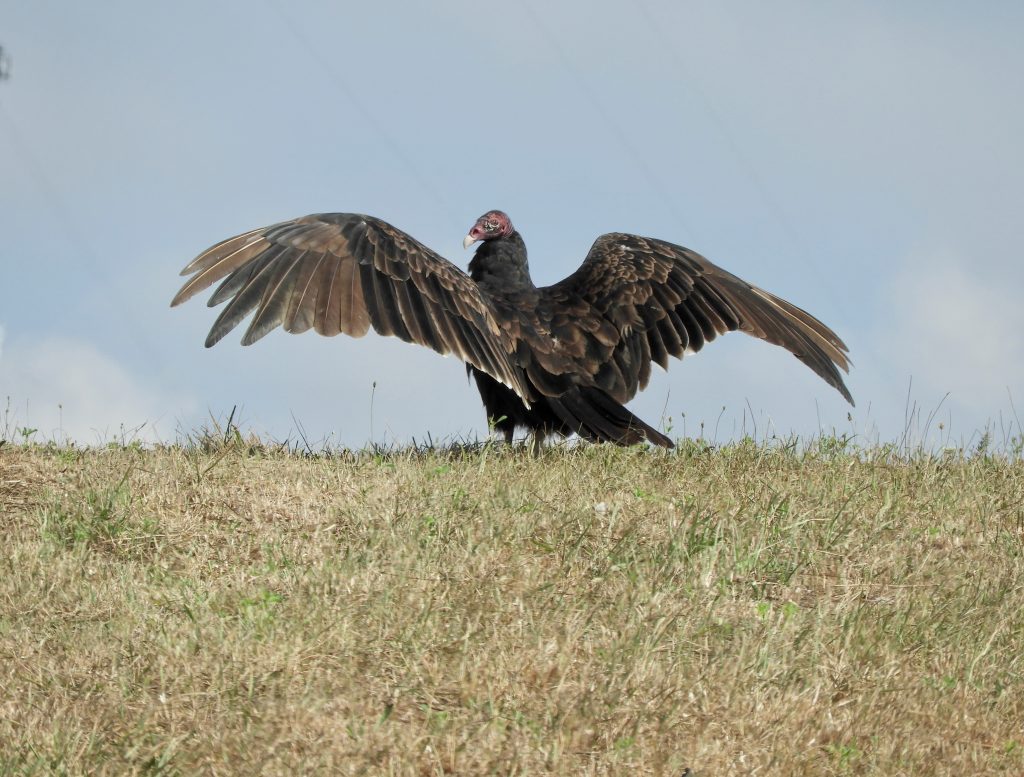
My morning continued with entertainment from a group of ten Turkey Vultures spread-winged and sunning themselves, (a behaviour thought to be effective using the sun’s UV to kill feather mite) and of course my target birds, three Sandhill Cranes. They were feeding knee deep in boggy pools and looking as elegant as cranes always do. The adults and young sandhills below, are from the same time of year but another time and place.
